According to the Film Art Textbook the Rhetorical Documentary Presents
Archive for the 'Documentary film' Category
Wisconsin Film Festival 2021: Streaming goodness
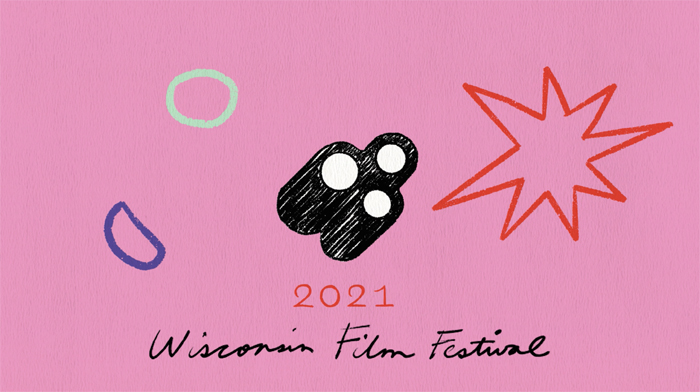
Trailer by Christina King.
DB hither:
We're been tardy nearly posting lately. Reasons, not excuses: I finished a volume manuscript of ungainly length. Kristin has been preparing and giving a talk for an Egyptological conference. Some medical matters (non-fatal, slow) take preoccupied me further.
But who could resist telling y'all virtually the offerings of our revived Wisconsin Moving picture Festival? Felled last spring by COVID, it has bounced dorsum every bit lively equally ever. Over 110 films are streaming over 8 days, 13-20 May.
Some films are available to anybody anywhere, others only to people in Wisconsin or the Midwest or the USA. Some screenings may be "at capacity" considering of audience limits set by distributors (who reasonably don't want to cannibalize screenings at other fests). You can cheque your access to a film by visiting that film'due south Eventive page on the fest site, and you tin can learn how to admission the fest shows on the Eventive data page.
In particular, many of the regional productions we proudly host might be things you can't be sure of communicable anywhere else.
The other S-word
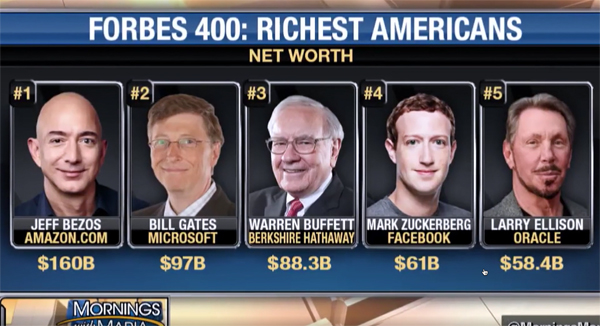
"Socialism" is back in the news. 120 mostly obscure brass hats have but proclaimed that the 2020 ballot was stolen. (Perhaps this level of cluelessness explains our post-1945 record of winning wars.) The signatories add together that the immediate conflict is "between supporters of Socialism and Marxism vs. supporters of Constitutional freedom and liberty." These writers who obviously accept not seen Dr. Strangelove or Seven Days in May. Otherwise, they'd try out improve lines.
Before this week I received an invitation from onetime UN Administrator Nikki Haley to sign up for the "National Plebiscite on Socialism." The envelope window displayed a teasing flash of legal tender. It turned out to be a well-baked 100-Bolivar note from Venezuela, worth well-nigh $.ten.

This burdensome proof that socialism doesn't work was accompanied by Nikki'southward memoir nigh seeing, first paw, the failures of regimes like Venezuela, Cuba, and Communist Mainland china, all representing "the last stage of socialism." She reports that some of them lack toilet paper. This outrage must not stand.

For me to receive this, the Republican Large Data dragnet proves every bit undiscriminating equally a notification I've inherited a fortune in Bitcoin. Yet, I was happy to reply. I voted aye, or as Nikki would take it YES!,to all the options. These included seventy% tax rates for her and her friends and arejection acceptance of Nordic social democracy, an option her world travels seemed to have missed. And I'k keeping the Bolivars.
So the right-fly lies make information technology all the more timely that WFF has included a double characteristic that might well speak to the ascension interest in socialism among the young and the equality-curious. The main film is Yael Bridge's The Big Scary "S" Word. It interweaves an historical narrative with two ongoing dramas of today. From the survey nosotros larn, as Cornel West explains, that socialism is "as American as apple pie." John Nichols, writer of The S-Word, is on hand to trace the motility dorsum to the nineteenth century and remind the states that "The Republican Political party was founded by socialists."

Other commentators show how the rising of capitalism and the pour of crises it brought forth tended reliably to agitate demands for equal rights and economic justice. We acquire of Lincoln's friendly correspondence with Marx, of slavery's centrality to American uppercase accumulation, and of the post-World-War Two reaction against the New Deal, building through Reagan to Bush-league and Clinton. The 2008 fiscal crunch supplied fresh momentum for a critical reaction to commercialism; Wall Street's capture of the economy encouraged some people to take a new look at socialist policies.
There are as well doses of theory, as when political scientists bespeak out that capitalism depends crucially on expanding the concept of individual property and inclines toward treating unpropertied individuals as interchangeable, expendable units. This may explicate why conservatives explode over graffiti but praise a teenager shooting downward peaceful demonstrators.

Threaded through Span'southward business relationship are affirmative moments: the creation of worker-owned coops, the establishment of the Bank of North Dakota (owned by taxpayers), and the stories of two young people who were fed up with injustice. One is Stephanie Price, an unproblematic-school teacher working 2 jobs; some of her income goes to books and supplies for her students. (This scenario is familiar.) She joins a teachers' strike and finds that the matrimony isn't effective in fighting their Oklahoma legislature. Chris Carter, an ex-marine, is the but socialist on the Democratic side of the Virginia legislature. He learns that fifty-fifty Democrats are capable of sabotage (surprised?), running an oppo ad linking him with a hammer and sickle. The stories of Stephanie and Chris provide suspense and yield a flare of hope.

How to Form a Union, directed by Gretta Wing Miller, is a story that could only come from the People's Republic of Madison. During the 197os, the Willy Street Coop was an emblem of our town's progressive tradition. Simply every bit it expanded, it faced competition from Whole Foods and other hip purveyors of provender. (I remember visiting Whole Foods and feeling old when Björk came on the Muzak.) Workers at the Coop accused it of corporatization and agitated for higher wages, less draconian shift policies, and ultimately a union. What happened next is told with tranquillity passion and a fine array of talking heads.
The proclamations of our statewide election officials, cartoonish reactionaries like Ron Johnson, Glenn Grothman, and their lot, accept over the last few years made me think that such big, loud, stupid people typify Wisconsin. Seeing these 2 films, steeped in state history, reminded me of things we can be proud of. Yeah, Wisconsin gave America Joe McCarthy and Scott Walker and Reince (Obvious Anagram) Priebus and Scott Fitzgerald, who greeted voters in a hazmat suit while assuring them that Covid was no danger. Merely we as well gave America socialist mayors, Bob LaFollette (a Republican), and political fighters similar Tony Evers, Mandela Barnes, Mark Pocan, and Tammy Baldwin. These are people on the right–that is, left–side of history.
Roman New year's day
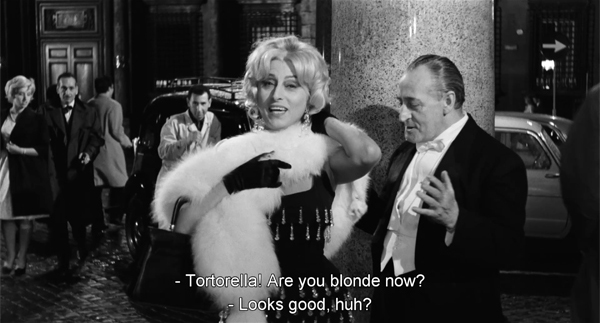
The Passionate Thief (1960).
One of the long-running revelations of the Bologna festival Cinema Ritrovato is the rich tradition of Italian one-act. (See here, and here.) One admirer is our programmer Jim Healy, who this year brought us a delightful example, Mario Monicelli'due south The Passionate Thief (another film from the fabulous year 1960). Two top Italian stars, the vivacious Anna Magnani and the glum Totò, piece of work on the fringes of the pic industry. This justifies behind-the-scenes glimpses of Cinecittà, likewise every bit the usual satire on the follies of filmmaking. We're introduced to Magnani equally office of a oversupply in a sword-and-sandal epic, while Totò scrapes up work as an extra.
Merely information technology's New Twelvemonth's Eve, and Magnani seeks out friends for a party. Meanwhile Totò is recruited as a partner for pickpocket Ben Gazzara, in the sort of imported-star turn that was common in European coproductions. His brooding, cynical presence adds a touch on of gravity to a crowded night of crisscrossing destinies featuring a drunk American millionaire (Fred Clark), frenzied Roman partygoers, and rich Germans whose mansion is invaded by our trio. Gusto, panache, sprezzatura, zest–cull the word, this movie has enough.
It also has stunning black-and-white cinematography, and its employ of the 1:one.85 ratio should be studied by every picture student. The screen surface area is shrewdly filled in long-accept mid-shots.
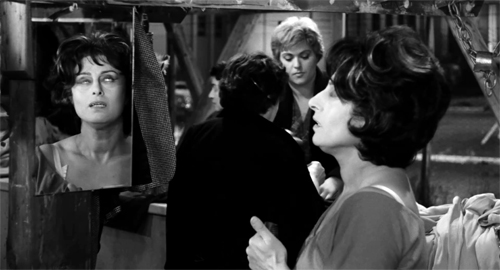
And since we know Ben is a thief, his wandering left hand draws us away from La Magnani's monologue, while Totò frets in the groundwork.
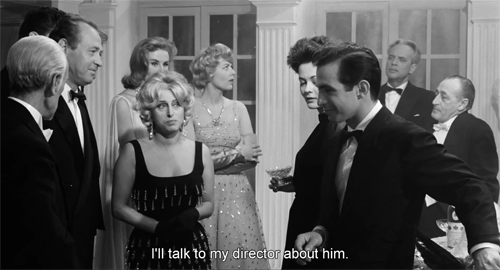
Aye, mirrors are involved throughout, sometimes creating weird carve up-screen furnishings.
Much of the movie was shot on location and it reminds us that the splendor of La Dolce Vita (released the same year) wasn't a ane-off.
This ripe imagery doesn't irksome down the bustle of the whole thing. The plot seems more episodic than it is; the opening sets upward a minor graphic symbol (a tram driver) and a food motif (lentils) that will pay off later. Clever every bit the devil, The Passionate Thief is i of those pieces of good dingy fun that keeps you, and the states, going back to film festivals.
The Festival's Moving picture Guide page links yous to complimentary trailers, podcasts, and Q &A sessions for each picture.
Thanks as ever to the untiring efforts of the festival panjandrums (I e'er wanted to employ that give-and-take) Kelley Conway, Ben Reiser, Jim Healy, Mike King, Pauline Lampert, and all their many colleagues, plus the University and the donors and sponsors that make this event possible.
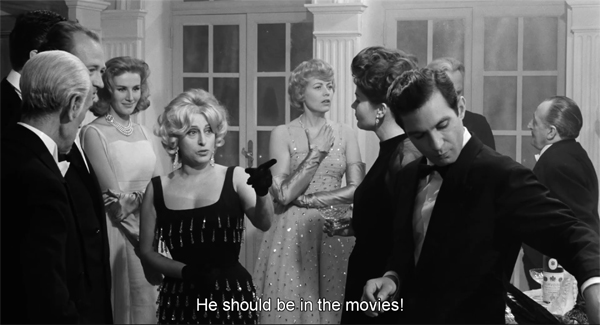
The Passionate Thief (1960).
Repost: Our daily barbarisms: Leo Hurwitz'southward Foreign VICTORY (1948)
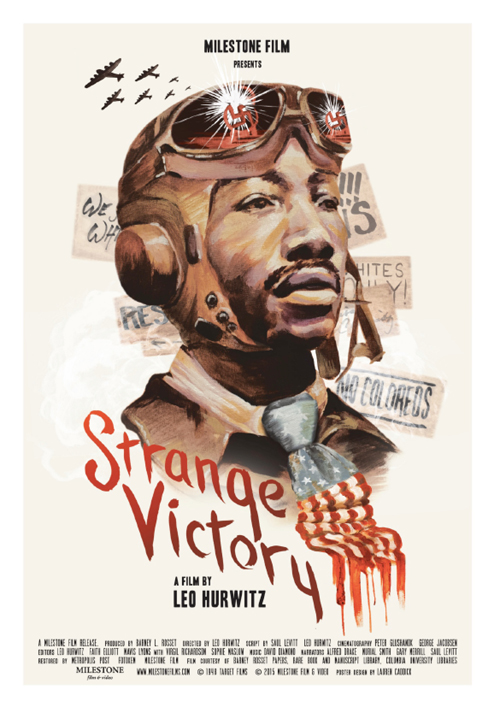
We have never reposted an entry earlier, just given recent events in The states history, and the celebration of Martin Luther King's legacy yesterday, and the impending inauguration of a new president tomorrow, we are re-running this entry, unrevised, from nearly four years agone.
It'south not just that it remains timely. (The interpolations remind us that Trump has been inciting violence from the get-go.) We wanted likewise to note that thanks to Milestone Films yous tin streamStrange Victory hither. I plan to write more well-nigh the terminate of the Trump era in the days to come, simply for now nosotros can admit the struggles ahead of us. Nosotros can be strengthened by recognizing that in 1948 people who had sacrificed far more than than we have still sustained an urge to fight for decency and justice. –DB
DB here:
Leo Hurwitz is perhaps best known for Native Land (1942), the documentary codirected with Paul Strand and narrated by Paul Robeson. Strange Victory (1948) has been less easy to run into. It was scarcely distributed and, though some reviews praised it, information technology was accused of Communistic sympathies. Now, restored and recirculated by the enterprising Milestone Films, Strange Victory has lost none of its compassion and righteous acrimony. Thanks to the energy of the Milestone team, led past A
In a menstruation of postwar optimism, Hurwitz and his colleagues dared to point out that the prejudices exploited past the Nazis remained powerfully nowadays in the United states of america. The winners, it seemed, hadn't repudiated the discrimination of the losers. American racism persisted and even intensified. The Nazis lost, but a form of Nazism won.
Dec. fourteen, 2015, in Las Vegas. Individuals at a Trump rally yelled "Sieg Heil" and "Light the motherfucker on fire" toward a black protester who was beingness physically removed by security staffers.
News of the world
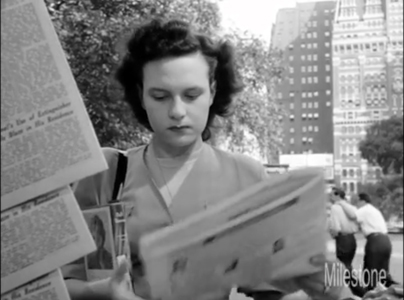
Like The Plow That Broke the Apparentlys (1936), on which Hurwitz was cameraman, and the Why We Fight series, Strange Victory is largely a compilation documentary. Guided by voice-over narration, it ranges across newsreels of Hitler's rise, spooky combat shots, and footage from the liberated death camps.
But Hurwitz and his team shot a lot of new material too, with an eye to bringing out the postwar significance of their theme. Newborn babies heart the camera, and kids play on sidewalks and in backlots (some shots call back Helen Levitt'due south evocative street photos). Meanwhile, anxious adults approach a newsstand. "If we won, why are nosotros unhappy?" the narrator asks at the get-go. The question is answered at the end: "There was not enough victory to go effectually."
Thanks to a hidden camera, that newsstand becomes a sort of gathering spot, a identify where people might encounter uncomfortable truths. Intercut with people buying newspapers are images of battles, as if the hunger for news aroused by the war didn't dissipate. Only what is that news? Hurwitz introduces it quickly: the ascension of nativist bigotry. In an center-glimmer, racist decals are slapped on fences, synagogues are smashed, and vicious pamphlets swarm through the frame. Race-baiting politicians, radio hate-mongers, and fascist sympathizers–the 1940s equivalents of our glory demagogues–are pictured and named. This is just i of many passages that guaranteed that Strange Victory could never be circulated on mainstream theatre circuits.
Hurwitz mixes found footage, stills, posed images, and fully staged scenes, such equally the episode in which a Tuskegee Airman tries to find a job with an airline. In this mixed strategy he follows not simply the precedent of the March of Time serial just also, and more than cocky-consciously, the Soviet documentarist Dziga Vertov.
In a 1934 article, Hurwitz chosen The Homo with a Movie Camera "the textbook of technical possibilities," and he isn't shy well-nigh mimicking the master. Early on in the film, portraying the Allies' victory, a shot shows a swastika-emblazoned building diddled to bits in slow movement. Later, to convey the return of Hitlerism, the same shot is run backward, reinstating the swastika on the building's roof. A graphically matched dissolve equates a Klan magician with Southern senator John Elliott Rankin.
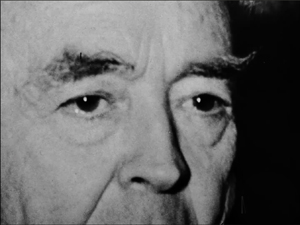
Later, via effective editing à la Kuleshov, parental pride is made colour-bullheaded, equally both a white female parent and a blackness i return a father's glance.

The film hasn't aged a bit. The print is gorgeously subtle black and white, and the score past the underrated David Diamond is warm in a bedroom-music manner. The film'southward vigorous vox-over and its ricocheting images (some returning as refrains, bearing new implications) expect forward to the hallucinatory, expanding associations created by our most biting gimmicky documentarist, Adam Curtis.

One of the individuals involved in the confrontation with Nwanguma was Joseph Pryor, a native of Corydon, Indiana, who graduated from loftier school last year. Subsequently the rally, Corydon posted a photo on his Facebook page that showed him shouting at Nwanguma. The post went viral and somewhen attracted the attention of the Marine Corps, which Pryor had simply joined.
The Marine Corps recruiting station in Louisville told war machine publication Stars and Stripes that Pryor had recently enlisted and was about to caput off for boot military camp. Captain Oliver David, a spokesman for the Marine Corps command, said Pryor had non yet undergone Marine Corps ethics training. . . . He added: "Hatred toward any group of individuals is non tolerated in the Marine Corps and he is being discharged from our delayed entry program constructive [Wednesday]."
The tyranny of facts
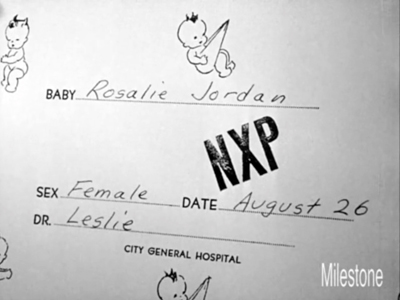
As e'er, the ordering of parts matters profoundly. How best to convey the idea that later a struggle to cleanse Europe of trigger-happy prejudice, the same attitude is flourishing in America? Yous might think of couching your argument as a narrative. In chronological society, that would be: The ascension of Hitler; the war defeating Hitler; the celebration of victory; the return of American bigotry in the postwar period. Clear and straightforward.
Hurwitz is more canny. Many films embracing rhetorical form, like the problem/solution construction of Pare Lorentz'southward The River (1938), volition embed brief narratives into their overarching argument. This is Hurwitz'southward approach, but his stories aren't chronologically sequenced. Instead, nosotros start with the America of today before flashing back to the high cost of defeating the Axis. "Everybody paid," says the male narrator. "Everybody." With a suspension to annals Roosevelt's expiry, jubilation surges upwardly as the Nazis fall. "For a day or two, the plain people owned the world." Merely then nosotros're dorsum to the newsstand and a montage of race-baiters and graffiti scrawlers.
Then, as we see a pregnant woman on a bench, nosotros hear a woman'southward voice. Her poetic musings reassure the newborn babies that they have a identify hither; she welcomes them to earthly love. Following the montage of haters with images of innocence casts a melancholy pall over these fresh-begun lives. They know null of the American brownshirts, but we know that they must learn our world.
This foreboding is confirmed by a chorus of proper name-calling over shots of newborns, the adult female's song of innocence is undercut by a song of biting experience. A new male narrator (Gary Merrill) raps out the facts of "our daily barbarisms." Get ready, he warns the babies: You will be tagged and vilified by how yous look and where you live. "Separation of people is a living fact," and they are future "casualties of war." Throughout the rest of the film, the shots of children carry a terrible aureola; they accept no thought of what they're facing.
Now, afterwards a long delay, nosotros flash back to Hitler's rise. The Führer'south strategy, funded by the rich, is seen every bit a deliberate mobilization of just these tribal "facts" for the sole end of acquiring ability. And where that process ends is the death camp. In a chilling visual refrain, the happy American toddlers are compared to troops of children marched forth barbed wire.
The narrative spirals back to the beginning. Again we see Hitler defeated, again ecstatic celebrations–but non, as before, among civilians in cities. Instead, we encounter Russian and American soldiers fraternizing, and included in this mix is the black pilot, grinning serenely in his cockpit. His presence was foreshadowed by swooping aeriform shots of the beginning. At present nosotros're back to the present, and he'due south looking for work. No luck; perchance he tin can be a porter? A new montage generalizes his plight: American society refuses to assimilate African Americans. A vicious cut takes united states from a room full of white secretaries to a cotton field–the only work available for people who participated as fully in the war attempt as anyone.

Now the early montage of Jim Crow images is recalled in a poetic string of associations on the word word, from Hitler's control of The Word to signs disallowment blacks from entry, ending with inscriptions etched on forearms.
The terminal images of passersby, filmed unawares, replace the newsstand of the opening with store windows as they peer inside. The sequence uncannily predicts the explosive consumer lodge that would follow in the war'due south wake. Over again, though, a shadow falls over the postwar globe. Hurwitz daringly intercuts the intent window-shoppers with the plunder of the camps–hair, jewelry–and the numbers on inmate uniforms, as if these were commodities on display.
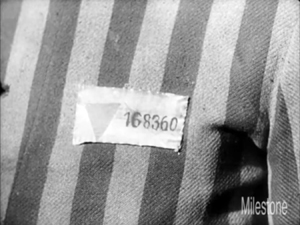
The state of war against inhumanity is far from over. Americans will demand to exist more than than curious consumers if they are to face up the struggle that lies ahead.

Foreign Victory is, it seems to me, the essential documentary of our moment. A well-nigh lxx-yr-erstwhile film tin can remind us that, equally the narration puts it, "hopelessness is next door to hysteria." The frustrations, despair, and hatreds that surfaced during Obama's tenure have crystallized in an American fascist movement of unprecedented breadth. The flick reminds united states that scapegoating is eternal, sometimes summoned quietly (they're not like usa, she's a traitor, he knows exactly what he'south doing), sometimes conjured upwards in total fury. At a moment when America is one IS assail away from a Trump or Cruz presidency, it's skillful to be reminded how the well-funded Hitler exploited Usa vs. Them. Temporizing pundits give every sufficiently funded lunatic the benefit of straight-faced interviews, or even tongue-baths. Correct-wing politicians and agitators, keen on power and uncommitted to principle, are ready to fall in line behind a leader if he might win. Forget Godwin's Police force. Facing today's assault on peace and justice, Strange Victory can rekindle our energies, without a moment to lose.
The crematorium is no longer in use. The devices of the Nazis are out of date. 9 meg expressionless haunt this landscape. Who is on the lookout from this strange tower to warn united states of the coming of new executioners? Are their faces really different from our own? Somewhere among us, there are lucky Kapos, reinstated officers, and unknown informers. There are those who refused to believe this, or believed it just from time to time. And there are those of us who sincerely look upon the ruins today, as if the former concentration army camp monster were dead and cached beneath them. Those who pretend to take hope again as the image fades, every bit though there were a cure for the plague of these camps. Those of united states of america who pretend to believe that all this happened only once, at a certain time and in a certain place, and those who refuse to encounter, who do not hear the cry to the end of time.
Milestone, who gave us the restored Portrait of Jason, has provided a very full presskit for Strange Victory here. My final quotation comes from Jean Cayrol'due south text for Dark and Fog (1955).
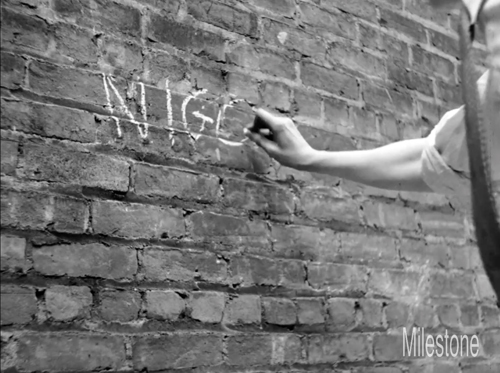
Foreign Victory (1948).
Little stabs at happiness half-dozen: Breathe

Commander in Principal (2020).
Terminal summer, in hope of reviving spirits in these times, I ran a series of clips I admired for their power to arouse and energize. They created a sort of disciplined exhilaration through adroit editing, camerawork, and music. They reliably gave me a lift, and maybe you too.
Now, in the Caligula phase of Trump'southward presidency, it seems appropriate to pay my respects to a masterpiece of engaging agitprop. I've registered my reservations about the Lincoln Project in an before entry, merely there's no denying that these walking wounded of right-wing partisanship accept recruited some very talented filmmakers. Their "Covita" assemblage was superb, and they have outdone themselves with this morning's triumph.
Here it is:
Experience it–but then we should study it.
It's an excellent instance of what we call in Moving-picture show Art associational grade–a blending of images, sounds, and texts to imply ideas and provoke feelings, in the mode of lyric poetry. The text itself is a lyric poem, at in one case ode, elegy, and apostrophe. Demi Lovato's high-strung, ascent and falling vibrato is in itself powerfully expressive. Only as important, the audiovisual texture enriches the text. Sometimes it's a affair of the image echoing the words, and sometimes the associations are purely visual. An element in one shot, such equally a gesture or facial expression, will retrieve something similar, or a dissimilarity.
The effects flash past quickly. Taken just as images, what do these shots accept in mutual?
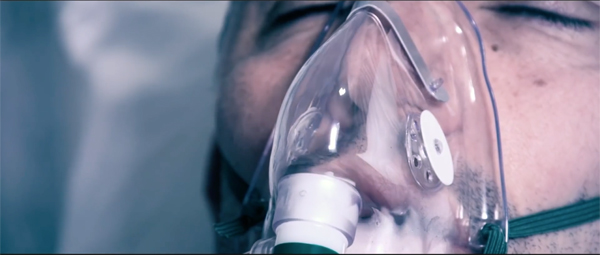
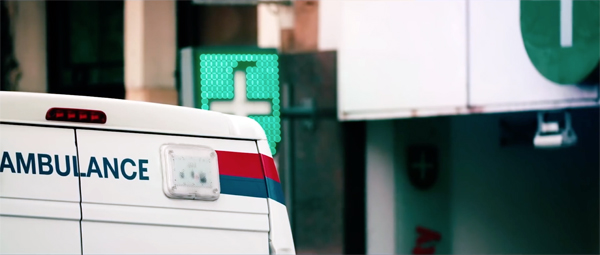
Nothing just a pulse: Labored animate on a ventilator matches the flicker of an emergency vehicle'southward turn signal, as if life is running out earlier our optics..
The structure mimics the song's layout. We move from problem to solution, from crisis to resistance, from emptiness to crowds, ending on a resolution that puts action in the easily of the viewer. Threading it all together is the way "I can't breathe" gets redefined. The phrase shifts from existence associated with George Floyd and other victims of law atrocities, to the COVID-19 pandemic, earlier calculation a twist: Trump's ain tour with the virus, capped in a direct accost to him.How does it feel to be able to exhale? By the terminate animate becomes metaphorically linked to voting. How does that experience?
As I mentioned in that before entry, contemporary agitprop reminds us how much every filmmaker owes to traditions. The techniques used in Commander in Primary stretch far back into the history of cinema; the upraised fists of the finale could have come straight out of Soviet montage.
It might seem pedantic to talk this way nearly such a powerful piece of movie theater. But the point is that the things we study are really out there, crafted by creative filmmakers and having an impact on viewers. The art we care about has concrete furnishings, and in studying it we can analyze simply how those effects are achieved. Analyzing forms and styles can augment our sense of what cinema tin can do, and it can strengthen our respect for the filmmakers who explore it.
A similar analysis could exist undertaken with many of the best current polemical documentaries, like Unfit and Totally Under Control. These galvanize united states not just through their subjects and "messages" but through their fresh use of conventions of course and manner. (The sequences of Totally Under Control devoted to First Capon Jared Kushner volition remain models of satiric montage.) As with the best of Adam Curtis'south work, these are important contributions not just to political discourse but to the history of moving-picture show as an fine art course.
Those goosebumps, that quivering gut, those tears? They come up from cinema, grand synthesis of the arts.
Another documentary working in this vein, Leo Hurwitz's Strange Victory, is discussed here. It's completely appropriate to our current crisis.
For other reflections on the Trump coup try, get hither and here and here and hither.
P.South. 9 December 2020: Afterwards winning anAdvertizing Age award for the Lincoln Project campaign videos, Rick Wilson explains the strategy and assesses their success in the first of four parts.
P.P.S. 24 December 2020: More backstory on the making of these videos from producer/manager Ben Howe.
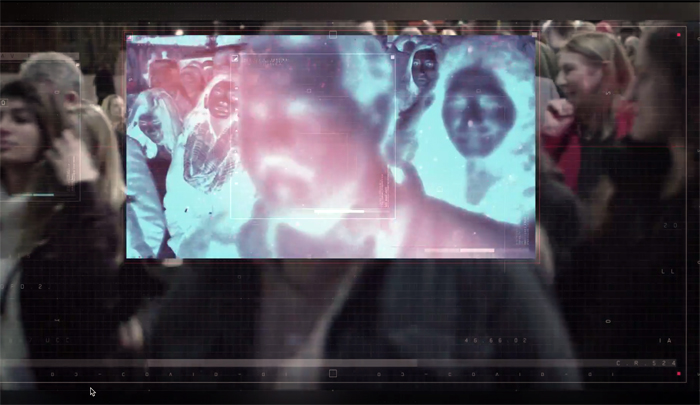
Totally Under Control (2020).
Vancouver: "It'south the Arts"
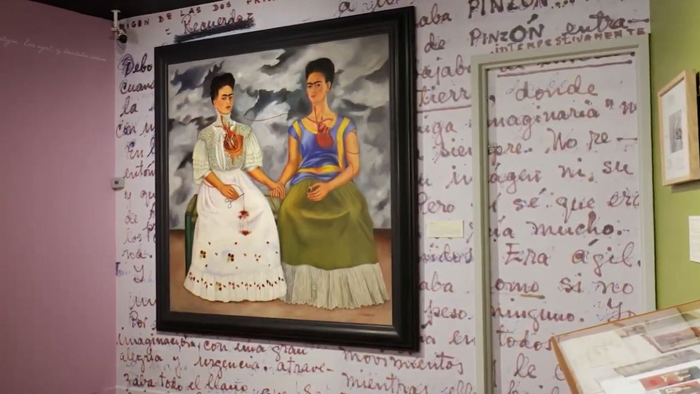
Frida Kahlo (2020)
Kristin hither:
I wonder how many of my readers will recognize the source of this entry'southward championship. Is Monty Python's Flying Circus still the perennial archetype it was among young people for decades after its original series was broadcast? That brief sentence was the championship of the sixth episode of the kickoff season, shown in 1969, though I didn't see it until some years later. The episode itself has little to practice with the arts, simply for some reason that particular title stuck with David and me, every bit few if any others did. Whenever we accept encountered a Boob tube programme or a review, oftentimes something pretentious, one of united states will turn to the other, or both simultaneously, and say, "It's the Arts!"
The Vancouver International Film Festival has an admirable custom of showing many documentaries. They oft deal with ecological issues and Canadian subject matter. One prominent thread, however, is documentaries virtually the arts. These are known as MAD, or "Music, Art and Blueprint." Although, equally I mentioned in my previous entry, I tend to stick to the Panorama program of international fiction films, I always try to attend a few of these arts documentaries when they fit in with my interests. Most of these are in fact wonderful, non pretentious. Still, I am likewise accepted to the phrase, and I think automatically, "Information technology's the Arts."
Paris Calligrammes (2019)
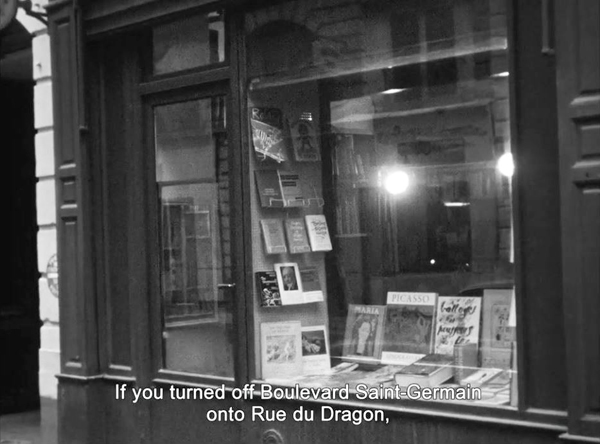
One documentary that I was keen to see is Ulrike Ottinger's autobiographical business relationship of her years living in Paris during the 1960s. Ottinger is known, at least in the US, primarily for her experimental fiction films, like Freak Orlando (1981) and Joan of Arc of Mongolia (1989). I had not encountered her work since and so and was eager to grab upward with her at this yr's festival.
Ottinger did what many young people call back of doing just never behave through on. She left home at the tender age of xx for an exciting new life. In 1962, she moved from Germany to Paris, where she lived until 1969 earlier returning to West Frg. In France she lived amidst Bohemians and stayed long plenty to witness the protests of May, 1968.
Naturally she was hugely influenced by her experiences. She tells of encountering artists and ideas: "In my euphoria, I wanted to convert all my experiences directly into art." Just how? Early on, she muses on how to convey those experiences of decades agone:
I ask myself that same question over fifty years afterwards. How can I make a film from the perspective of a very immature creative person I remember, with the experience of the older artist I am today? In Paris, I followed in the footsteps of my heroines and heroes. Wherever I found them, they will appear in this film.
There is no footage of Ottinger from this catamenia, and relatively few relevant photographs. Instead she wisely organizes the early portions of the picture show around her connection to an extraordinary bookshop that was a center of creative and intellectual life at the time: Calligrammes (above), founded in 1951 by Fritz Picard, who had fled Nazi Germany in 1938. As a dealer in rare German and other books on the arts, Picard became host to innumerable avant-garde artists and intellectuals. Ottinger recalls ownership many books on the High german Expressionists and other avant-garde artists and movements of earlier decades.
(David bought some books for his dissertation on French Impressionist movie theatre at Calligrammes in the summer of 1973. Picard died in November of that year, though the shop was continued for a fourth dimension by others.)
Ottinger became a friend of Picard and socialized with the patrons and visitors of the shop. Below, she'due south in the blackness vest, sitting beside Picard at a party. She also was indirectly influenced by the keen artists of the by, such every bit Hans Richter, who had frequented Calligrammes. In one sequence she flips through the guest-book signed by many a famous visitor, and we see clips from films similar Ghosts earlier Breakfast, which influenced her.
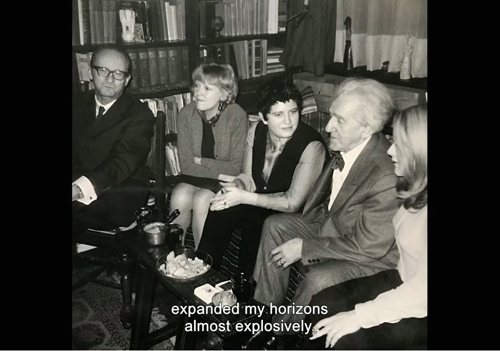
Post-obit this section, Ottinger gives us sequences on the effects of the Algierian state of war on her friends in Paris and describes the protests of May, 1968, some of which she was able to come across from her apartment most the Sorbonne.
Perhaps inevitably, Paris Calligrammes reminded me of some of the Agnès Varda's tardily autobiographical work. Ottinger is less lyrical and personal, as well as being more than overtly political. There is more of a sense of proper name-dropping, at to the lowest degree in the early department. Nonetheless, who wouldn't be interested in hearing near the early on life of someone who has had such adventures? Ottinger also describes the influences on her by the artists she learned almost and met. The brief clips from her own films should inspire a new generation of moving-picture show buffs to seek out her work.
Like then many of the films at the Vancouver International Film Festival this year, Paris Calligrammes was shown in Berlin. For an enthusiastic and informative review washed at the time, see Richard Brody's piece in The New Yorker.
Marcel Duchamp: The Art of the Possible (2020)
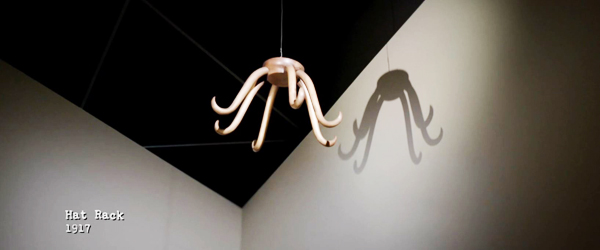
I am of 2 minds about Matthew Taylor's documentary on Duchamp. It presents an excellent overview of the creative person's career and work, and one could learn a groovy deal from information technology. It makes clear, for case, the relationship between Duchamp's early on ready-mades and the fact that they were mostly later lost and much later replaced by replicas–all with the artist's cooperation. It puts his important early painting "Nude Descending a Staircase" (run across bottom) in its historical context.
There are the usual experts explaining Duchamp's intellectual approach to his artworks and his considerable influence on subsequent generations. We are non given much indication concerning who some of these experts are. The identifying labels ofttimes just say "Curator" or "Art historian" without linking the experts to any institution or publication. I tried looking i of them upward on the internet and couldn't find him. I'm sure, however, that they know Duchamp'due south life and work well.
These experts are besides almost all extremely enthusiastic about Duchamp'due south piece of work and especially the touch he has had upon art–not, as they emphasize, merely specific trends but absolutely all subsequent art up to the nowadays. Early on in the pic, before we have been introduced to most of the talking heads, a voiceover declares, "Without him, imagine where we would exist. We'd be painting in the style of Matisse or Picasso. That's what modern art would exist without Duchamp."
(Ironic note: Duchamp's stepson, Paul Matisse, is the grandson of Henri Matisse.)
That'southward a pretty remarkable claim. It's hard to recollect of a period that long in the post-Medieval era when fine art has but frozen in place for a century. Surely innovative styles and individual artists would accept come up along and produced distinctive work that did not depend on Duchamp's main claim to fame, his demonstration that anything could become an artwork if nosotros regard it as such. Did the Soviet Constructivists depend on Duchamp's idea? Did the German Expressionists? Practise highly individualistic artists? (Meet the department below.) Do manga and graphic novels, which are coming to be thought of equally worthy of attention equally art–non only because someone establish them and declared them so, but considering they contains qualities that were considered artistic well before Duchamp?
To be sure, Duchamp did have a huge impact, as this nautical chart, shown in the film, suggests. Information technology was devised by Dick Higgins, artist and co-founder of Fluxus. (The absence of Pop Fine art amid the circles is rather puzzling, though it does figure in the film.) One could, however, devise many other circles for trends and institutions that do not reflect that bear upon.
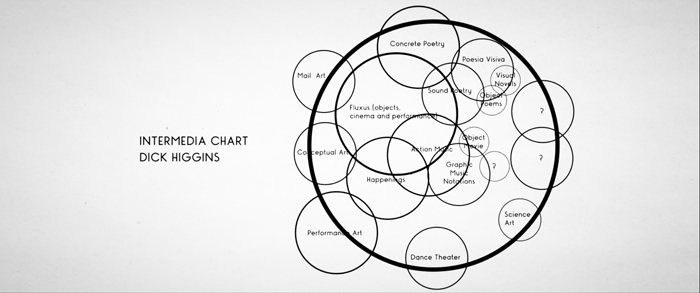
Toward the end of the flick, the experts go further, suggesting that Duchamp encourages the democratization of art past suggesting that anyone can be an artist, whether on their own or by taking and re-purposing existing artworks or objects or sounds. However would nosotros say that the many outsider artists of the by century who have come up to the recent attention of gustation-makers had anything to do with Duchamp? And fanart, if that is included in this vast generalization, existed before Duchamp.
Despite the obvious excitement the experts display in extolling Duchamp'south work, someone watching the film might be less sympathetic, given the debatable land into which Postmodernism in full general has led the art earth. As one inevitably thinks, what'southward next, Post-Postmodernism?
Duchamp himself seems, co-ordinate to the moving-picture show, to have had considerably less enthusiasm about his own artworks, preferring perhaps the idea of them rather than the execution. He took twelve years to complete the Corking Glass and declared himself pleased with the results when an accident severely cracked its surface. He did not bother to keep runway of his ready-mades, most of which disappeared. I wonders why he bothered to follow the initial venture into that expanse with "Fountain" (a urinal signed "R. Mutt 1911"), since subsequent ready-mades like "Hat Rack" (above) make the same intellectual betoken.
Belatedly in life Duchamp seemingly gave up art-making to devote himself to competitive chess. After his death it turned out that from 1946 to 1966 he had been working on "Étant donnés," a peep-bear witness view of a spreadeagled nude woman, based on his mistress during part of that time. Despite the raptures expressed by the experts, it looks similar it could exist considered revenge porn. But only, presumably, if one calls it that.
But one of the experts, Peter Goulds, departs from the general unquestioning idolization of Duchamp. Near the end he says,
Later in life, of course, he must accept found information technology incredibly amusing to hear people latch onto his theories as though they were universal truths, when really his whole life was nearly bucking those very conventions and defying them. So I'd similar to advise that his form of so-chosen conceptual art was a much more playful substitution. I'm non so certain about how even serious he was about it himself. Here he throws these things out as suggestions, with thought. Others, perhaps more needy than himself, would make these rules be therefore solely applicable.
Frida Kahlo (2020)
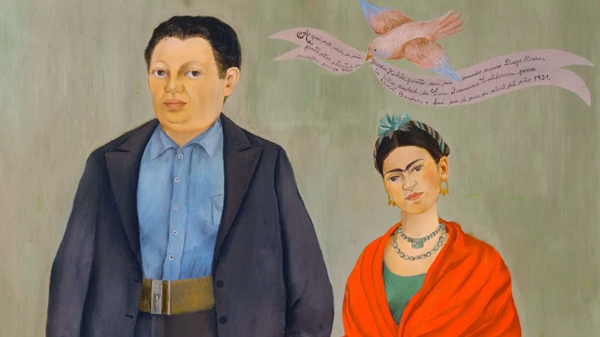
Frida Kahlo is ane of those artists who don't appear to owe much, if anything to the influence of Marcel Duchamp. As the film makes clear from the beginning, she was aware of European artistic movements and developments. Yet, neither she nor her husband, muralist Diego Rivera, seem to accept absorbed much from them. Kahlo ever denied that her subsequently work was Surrealistic, and one might rather attribute its fantastical elements derive more from the Latin American tradition of Magical Realism.
Indeed, the whole idea that Duchamp influenced all of modern art comes to seem remarkably Amero- and Euro-centric if one considers that information technology implicitly either scoops highly private artists like Kahlo upwards into one enormous category or eliminates them from that category birthday.
I establish Frida Kahlo more satisfying than Marcel Duchamp. Its experts are all clearly identified equally to their position and establishment. Some are curators of the institutions which own her works, such every bit the Museo de Arte Moderno in United mexican states Urban center. At that place "The Two Fridas" is shown (see superlative) equally the curator discusses it.
These experts are every bit enthusiastic about their subject as those in the Duchamp film, only they are focused entirely on recounting Kahlo'south life, her social context, and the influences on and changes in her style beyond her life. For example the uncomplicated presentation of "Frida and Diego Rivera," an early on portrait done before long after their spousal relationship, gives fashion to the more sophisticated and symbolic "The Two Fridas."
Archival photographs and flick clips illustrate the eras of the places where Kahlo lived and traveled. The impact of the lingering effects of her injuries in an extremely serious traffic blow in her youth, her travels with Rivera in the US, and the rockiness of their marriage are all discussed to assistance clarify the often cryptic visual references in her paintings.
In curt, Frida Kahlo is a model of a staightforward and informative documentary on an artist. I was pleased to be introduced by it to its producers, Exhibition on Screen. In business organization since 2011, information technology has made twenty-half dozen such documentaries. These are shown in theaters and festivals initially, before being made available on disc and streaming on their website. Frida Kahlo is promised for streaming on October twenty.
One time again, cheers, as usual to Alan Franey, PoChu AuYeung, Jane Harrison, Curtis Woloschuk, and their colleagues for their help during the festival.
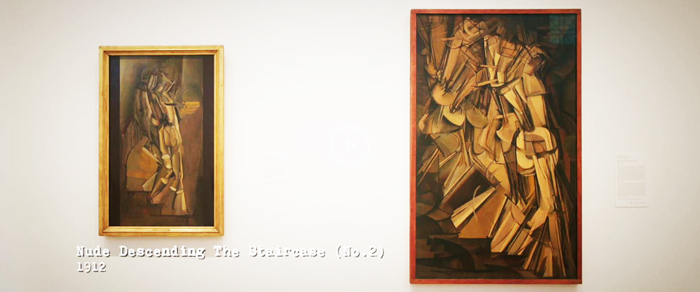
Marcel Duchamp: The Fine art of the Possible (2020)
Source: http://www.davidbordwell.net/blog/category/documentary-film/
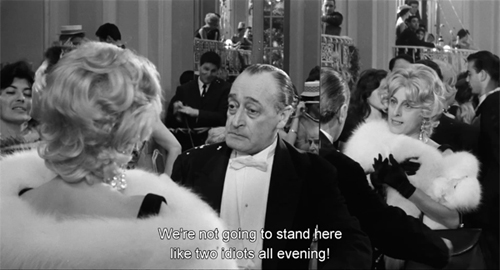
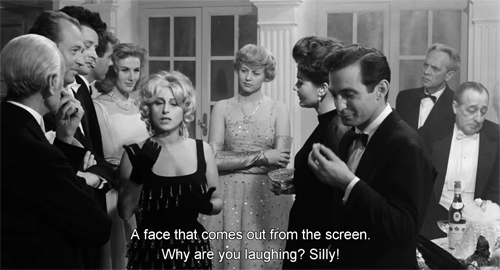
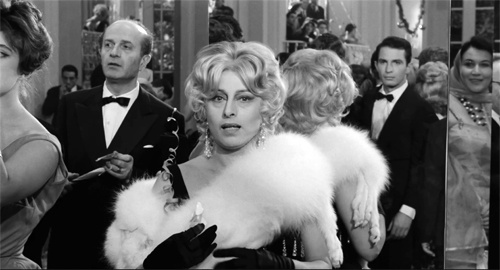
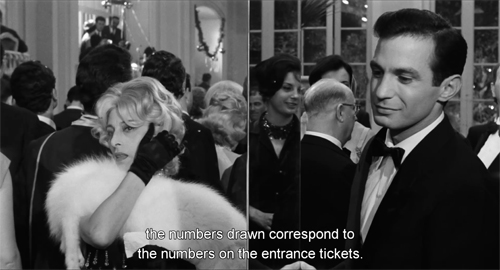
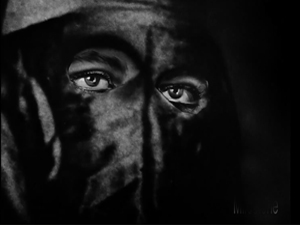



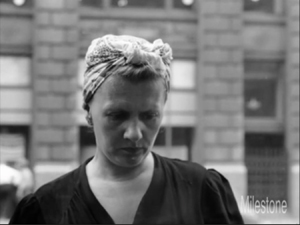
0 Response to "According to the Film Art Textbook the Rhetorical Documentary Presents"
Post a Comment